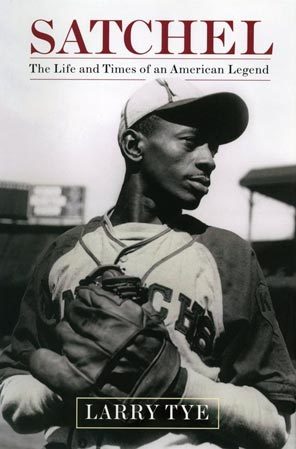Three things:
• A hearty congratulations to Pete Abraham, who is leaving The Journal News for The Boston Globe and in doing so will move from covering the Yankees to the hated Red Sox. As any Yankee fan with an Internet connection knows, Pete’s been THE go-to beat reporter for all things Yankees for the past few years, punching well above his weight against the city’s major dailies because he took to the medium of blogging much more readily than his competitors.
In retrospect, that’s hardly a surprise. Pete’s been at the Journal News for the past decade, and back in 2004, he interviewed me for an article he wrote about the baseball blogosphere and threw a high compliment my way: “[Alex] Belth and many other bloggers were first inspired by Aaron Gleeman, Jay Jaffe and David Pinto, the Willie, Mickey and the Duke of this fledgling genre. They were among the first and are now three of the best-read bloggers.”
Such flattery.
It wasn’t until 2006 that Pete added blogging to his beat chores, but in doing so he’s set an example of which the rest of the industry is only beginning to catch up (likely while muttering under their breaths). “Blog” was just another four-letter word in the world of mainstream sports reporting, and while there are still hundreds if not thousands of his peers who still don’t get it, he took to it like a duck to water. Not only did he manage to create a durable, enthusiastic community at the LoHud Yankees Blog, as it’s officially known, but he intuitively understood that things like pregame lineup postings, audio snippets and in-game notes were what his audience craved, and usually scooped the competition with his tidbits of info about injuries and roster moves (sadly, he was never any good at telling me when the Yankees game would be rained out, but that’s a small quibble borne of the fact that the press guys are just as in the dark about said topic).
It was only a matter of time before he moved up in the world, and I had high hopes he’d remain in the New York market. As happy as I am for the big lug, he move to Boston is a bit of a kick in the stomach for his Yank-flavored audience, but you can’t begrudge the man his due. He’s earned this one, and I wish him nothing but the best.
• Twenty-seven years after it was published, I’m finally the owner of a copy of the 1982 Bill James Baseball Abstract. Though my curiosity had been piqued as a 10-year old when I read Dan Okrent’s 1981 Sports Illustrated article, I’d never actually owned my own copy. I borrowed the ’82 from a friend that fateful summer and kept it for a couple months, but if memory serves, I returned it once a minor feud over baseball cards was settled. I’ve been hunting for my own copy for the better part of the past decade and on at least two other occasions had thought I’d secured a copy, one through a bookseller who regretfully wrote back to say he no longer had it in stock, the other by an unscrupulous eBay retailer who refused to ship internationally despite making no note of that on the sale page.
Published by Ballantine, the ’82 was the first of the mass-market James books, and because of that, it was a landmark, for it introduced such key concepts as the Pythagorean Method, the Defensive Spectrum, Defensive Efficiency, Runs Created, Isolated Power, park effects, the age 27 prime, pitcher run support, and so much more to the great unwashed audience. All of those concepts are still in use today, and they remain fundamental to the field of sabermetrics.
• This week’s Hit List is here, with the Yankees on top, the Dodgers second, and the Red Sox third:
[#1 Yankees] Big Man: As the Yankees close in on 100 wins, lost amid A.J. Burnett’s meltdowns, Andy Pettitte’s fatigued shoulder and the never-ending drama that is the Joba Rules is the performance of CC Sabathia. He leads the league in wins (17), is second in innings (213 1/3) and ranks among the top 10 in SNLVAR, ERA and strikeouts. The Yankees have won 11 of his last 12 starts, a span over which he’s put up a 2.75 ERA.[#2 Dodgers] Coming Back: After seeing their division lead dwindle to two games while their rotation takes turns foregoing Clayton Kershaw, Randy Wolf, and now Chad Billingsley, the Dodgers fall back on strong performances by Hiroki Kuroda, Vicente Padilla and Jon Garland to beat up on the Giants and Pirates and restore their NL West lead. Andre Ethier homers on back-to-back nights against the Bucs, the latter a 13th-inning game-winner which marks his sixth walkoff hit of the year. In doing so, he becomes the first Dodger to reach the 30-homer plateau since Adrian Beltre in 2004.
[#3 Red Sox] Dice Is Nice: Daisuke Matsuzaka throws six shutout innings against the Angels in his first big-league appearance in nearly three months. Though his ERA still stands at 7.05, Matsuzaka’s return is well-timed given the potential diceyness of the team’s current rotation situation. Elsewhere amid a seven-game winning streak, Jon Lester tosses eight shutout innings against the Rays two days after a rocky 23-pitch stint is washed away by the rain. He’s riding a 17-inning scoreless streak and has allowed just 11 runs over his last eight starts, and now ranks third in the league in strikeouts (211), fifth in SNLVAR (5.9) and sixth in ERA (3.29).
Tough to believe I’ve got only two more of these to do this season. Where does the time go?

